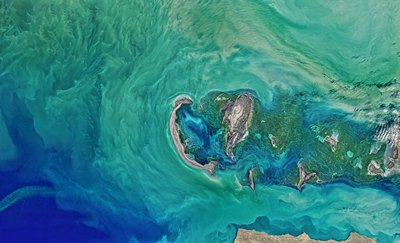Documents
This section features public documents and files uploaded by the stakeholders and custodians of the Caspian Sea environment.
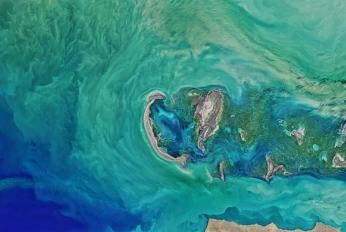 День Каспийского моря 2024 в Астраханской области - ОтчётThu, 10/04/2025 - 21:43В 2024 году в Астраханской области прошли мероприятия, посвященные «Дню Каспийского моря», связанные с экологическим просвещением. На сегодняшний день вопросы охраны окружающей среды стоят очень остро. Одной из причин этого является отсутствие у людей экологической грамотности и культуры. Основы экологической культуры закл
День Каспийского моря 2024 в Астраханской области - ОтчётThu, 10/04/2025 - 21:43В 2024 году в Астраханской области прошли мероприятия, посвященные «Дню Каспийского моря», связанные с экологическим просвещением. На сегодняшний день вопросы охраны окружающей среды стоят очень остро. Одной из причин этого является отсутствие у людей экологической грамотности и культуры. Основы экологической культуры закл
- Description
В 2024 году в Астраханской области прошли мероприятия, посвященные «Дню Каспийского моря», связанные с экологическим просвещением.
На сегодняшний день вопросы охраны окружающей среды стоят очень остро. Одной из причин этого является отсутствие у людей экологической грамотности и культуры. Основы экологической культуры закладываются в раннем возрасте. Необходимо воспитывать у детей бережное и осознанное поведение по отношению к родной природе. С этой целью Астраханская область регулярно принимает активное участие в проведении Дня Каспийского моря с целью формирования представления о богатстве морской среды Каспия, сохранения, восстановления устойчивого и рационального использования биоресурсов моря, формирования экологического образования и воспитания среди населения.
- Attached documents
- Metadata
- Year
- 2024
 Caspian Sea Day 2024 in Russia - ReportThu, 10/04/2025 - 21:41NCLO-CIP prepared an information letter for the “Caspian Sea Day”-2024 celebration and circulated it to the Russian participants of the Caspian Sea national network of public and other environmentally oriented organizations along with other information materials, including a draft information brochure on the 20th anniversary
Caspian Sea Day 2024 in Russia - ReportThu, 10/04/2025 - 21:41NCLO-CIP prepared an information letter for the “Caspian Sea Day”-2024 celebration and circulated it to the Russian participants of the Caspian Sea national network of public and other environmentally oriented organizations along with other information materials, including a draft information brochure on the 20th anniversary
- Description
NCLO-CIP prepared an information letter for the “Caspian Sea Day”-2024 celebration and circulated it to the Russian participants of the Caspian Sea national network of public and other environmentally oriented organizations along with other information materials,including a draft information brochure on the 20th anniversary of the Tehran Convention signing. Based on those materials, representatives of the public and other interested parties had the opportunity to present in a brief systematic form a chronology of historical events and current activities within the framework of the Tehran Convention, including the national “Caspian Sea Day” celebrations.
- Attached documents
- Metadata
- Year
- 2024
 День Каспийского моря 2022 - Отчёт о мероприятияхThu, 10/04/2025 - 21:28В ноябре 2023 года исполнилось 20 лет с момента подписания в г. Тегеране Рамочной конвенции по защите морской среды Каспийского моря – Тегеранской конвенции – пятью прикаспийскими государствами: Азербайджанской Республикой, Исламской Республикой Иран, Республикой Казахстан, Российской Федерацией и Туркменистаном. Конвенция
День Каспийского моря 2022 - Отчёт о мероприятияхThu, 10/04/2025 - 21:28В ноябре 2023 года исполнилось 20 лет с момента подписания в г. Тегеране Рамочной конвенции по защите морской среды Каспийского моря – Тегеранской конвенции – пятью прикаспийскими государствами: Азербайджанской Республикой, Исламской Республикой Иран, Республикой Казахстан, Российской Федерацией и Туркменистаном. Конвенция
- Description
В ноябре 2023 года исполнилось 20 лет с момента подписания в г. Тегеране Рамочной конвенции по защите морской среды Каспийского моря – Тегеранской конвенции – пятью прикаспийскими государствами: Азербайджанской Республикой, Исламской Республикой Иран, Республикой Казахстан, Российской Федерацией и Туркменистаном. Конвенция после ее ратификации всеми Сторонами и вступила в силу 12 августа 2006 года.
12августа Сторонами Конвенции решением 1-ой сессии Конференции Сторон Тегеранской конвенции (май 2007 года, г. Баку, Азербайджанская Республика) объявлен региональным «Днём Каспийского моря», который отмечается ежегодно прикаспийскими государствами мероприятиями, направленными на повышение осведомленности об экологических проблемах Каспия и путях их решения. К двадцатилетию подписания Тегеранской конвенции временным Секретариатом Тегеранской конвенции с участием Сторон Конвенции была подготовлена информационная брошюра, которая в настоящее время готовится к изданию.
- Attached documents
- Metadata
- Year
- 2024
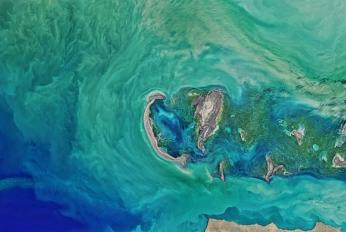 Towards effective implementation of the Framework Convention for the Protection of the Marine Environment of the Caspian Sea by E. KvitsinskaiaSat, 21/12/2024 - 16:56The paper is presented by the author in her personal capacity and opinions expressed in this paper should be attributed to the author. They are not mean to represent the positions or opinions of the UNEP or the State Parties to the Framework Convention on the Protection of the Marine Environment of the Caspian Sea.
Towards effective implementation of the Framework Convention for the Protection of the Marine Environment of the Caspian Sea by E. KvitsinskaiaSat, 21/12/2024 - 16:56The paper is presented by the author in her personal capacity and opinions expressed in this paper should be attributed to the author. They are not mean to represent the positions or opinions of the UNEP or the State Parties to the Framework Convention on the Protection of the Marine Environment of the Caspian Sea.
- Description
The paper is presented by the author in her personal capacity and opinions expressed in this paper should be attributed to the author. They are not mean to represent the positions or opinions of the UNEP or the State Parties to the Framework Convention on the Protection of the Marine Environment of the Caspian Sea.
- Attached documents
- Metadata
- Year
- 2009
 Thesis: “Current developments in the regime and international legal status of the Caspian Sea” by Dr. Barbara Janusz-PawlettaSat, 21/12/2024 - 16:04The Caspian Sea is the largest completely enclosed body of salt water in the world and constitutes a particularly fragile ecosystem. It contains great fishery resources, including 90% of the world’s stock of sturgeon, as well as vast oil and gas deposits in the subsoil. It is crossed by important transportation routes connec
Thesis: “Current developments in the regime and international legal status of the Caspian Sea” by Dr. Barbara Janusz-PawlettaSat, 21/12/2024 - 16:04The Caspian Sea is the largest completely enclosed body of salt water in the world and constitutes a particularly fragile ecosystem. It contains great fishery resources, including 90% of the world’s stock of sturgeon, as well as vast oil and gas deposits in the subsoil. It is crossed by important transportation routes connec
- Description
The Caspian Sea is the largest completely enclosed body of salt water in the world and constitutes a particularly fragile ecosystem. It contains great fishery resources, including 90% of the world’s stock of sturgeon, as well as vast oil and gas deposits in the subsoil. It is crossed by important transportation routes connecting Europe and Central Asia. For much of the twentieth century it was within the exclusive domain of Iran and the USSR, with the latter enjoying naval dominance. With the collapse of the Soviet Union the geopolitical situation in the region changed significantly. Instead of two, there are currently five riparian states – Russia, Iran, Azerbaijan, Kazakhstan and Turkmenistan – each filing differing legal claims.
- Attached documents
- Metadata
- Year
- 2009
 Геоинформационная система космического экологического мониторинга казахстанской части каспийского моряThu, 09/08/2018 - 13:24В данной работе рассмотрена методика создания распределен-ной геоинформационной системы (на основе WEB технологий) для наблюдений экологического состояния прибрежных территорий аква-тории казахстанской части Каспийского моря. ГИС использует данные аэро-космосъемки, картографических и аналитических данных.
Геоинформационная система космического экологического мониторинга казахстанской части каспийского моряThu, 09/08/2018 - 13:24В данной работе рассмотрена методика создания распределен-ной геоинформационной системы (на основе WEB технологий) для наблюдений экологического состояния прибрежных территорий аква-тории казахстанской части Каспийского моря. ГИС использует данные аэро-космосъемки, картографических и аналитических данных.- Description
В данной работе рассмотрена методика создания распределен-ной геоинформационной системы (на основе WEB технологий) для наблюдений экологического состояния прибрежных территорий аква-тории казахстанской части Каспийского моря. ГИС использует данные аэро-космосъемки, картографических и аналитических данных.
- Attached documents
- Metadata
- Year
- 2009
 Каспий теңізіндегі балықтардың паразитфаунасыThu, 09/08/2018 - 13:12Каспийй теңізінде ауланған балықтардың 15 түрін ихтиопатологиялық зерттеу нәтижелері бойынша Anisakidae тұқымдасы жататын Anisakis, Contracaecum,Porrocecum тоғышарларының жаппай таралуы анықталады.
Каспий теңізіндегі балықтардың паразитфаунасыThu, 09/08/2018 - 13:12Каспийй теңізінде ауланған балықтардың 15 түрін ихтиопатологиялық зерттеу нәтижелері бойынша Anisakidae тұқымдасы жататын Anisakis, Contracaecum,Porrocecum тоғышарларының жаппай таралуы анықталады.- Description
Каспийй теңізінде ауланған балықтардың 15 түрін ихтиопатологиялық зерттеу нәтижелері бойынша Anisakidae тұқымдасы жататын Anisakis, Contracaecum,Porrocecum тоғышарларының жаппай таралуы анықталады.
- Attached documents
- Metadata
- Year
- 2009
 Мониторинг геосферных процессов казахстанской части КаспияSun, 08/07/2018 - 22:22статья КазНУ Вестник
Мониторинг геосферных процессов казахстанской части КаспияSun, 08/07/2018 - 22:22статья КазНУ Вестник- Description
статья КазНУ Вестник
- Attached documents
- Metadata
- Year
- 2009
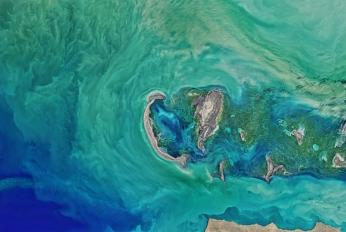 Caspian Environment Programme - Regional Water Quality Monitoring (2009)Tue, 12/06/2018 - 11:51This Regional Water Quality Monitoring Programme has been developed as part of the project “Caspian Water Quality Monitoring and Action Plan for Areas of Pollution Concern’s (Caspian MAP)”. This project has been financed by the Tacis Programme of the European Union (EU) which amongst others promotes regional co-operation on
Caspian Environment Programme - Regional Water Quality Monitoring (2009)Tue, 12/06/2018 - 11:51This Regional Water Quality Monitoring Programme has been developed as part of the project “Caspian Water Quality Monitoring and Action Plan for Areas of Pollution Concern’s (Caspian MAP)”. This project has been financed by the Tacis Programme of the European Union (EU) which amongst others promotes regional co-operation on
- Description
This Regional Water Quality Monitoring Programme has been developed as part of the project “Caspian Water Quality Monitoring and Action Plan for Areas of Pollution Concern’s (Caspian MAP)”. This project has been financed by the Tacis Programme of the European Union (EU) which amongst others promotes regional co-operation on environmental protection. On of the main objectives of the Caspian MAP is to support the Caspian Environment Programme (CEP), which is a partnership between the five littoral states - Azerbaijan, Islamic Republic of Iran, Kazakhstan, Russian Federation and Turkmenistan, and International Partners like EU, UNDP, UNEP, and the World Bank. The CEP's mission is to assist the Caspian littoral states to achieve the goal of environmentally sustainable development and management of the Caspian environment for the sake of long-term benefit for the Caspian inhabitants.
- Attached documents
- Metadata
- Year
- 2009
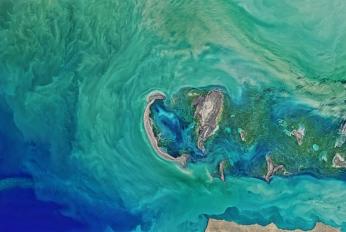 Caspian Environment Programme - Regional Pollution Action Plan (2009)Tue, 12/06/2018 - 11:48The Regional Pollution Action Plan for the Caspian Sea (RPAP), has been prepared as part of the project “Caspian Water Quality Monitoring and Action Plan for Areas of Pollution Concern’s (hereafter: Caspian MAP)”. The project is financed by the Tacis Programme of the European Union (EU), which has as one of its objectives th
Caspian Environment Programme - Regional Pollution Action Plan (2009)Tue, 12/06/2018 - 11:48The Regional Pollution Action Plan for the Caspian Sea (RPAP), has been prepared as part of the project “Caspian Water Quality Monitoring and Action Plan for Areas of Pollution Concern’s (hereafter: Caspian MAP)”. The project is financed by the Tacis Programme of the European Union (EU), which has as one of its objectives th
- Description
The Regional Pollution Action Plan for the Caspian Sea (RPAP), has been prepared as part of the project “Caspian Water Quality Monitoring and Action Plan for Areas of Pollution Concern’s (hereafter: Caspian MAP)”. The project is financed by the Tacis Programme of the European Union (EU), which has as one of its objectives the promotion of regional co-operation on environmental protection. The overall objective of the Caspian MAP is to achieve improved quality of the marine and coastal environment of the Caspian Sea. In particular, the RPAP (current Report) provides recommendations to regional strategies for pollution reduction, with a focus on the identified Areas of Pollution Concern. The Caspian MAP also developed a proposal for a Regional Water Quality Monitoring Program.
- Attached documents
- Metadata
- Year
- 2009
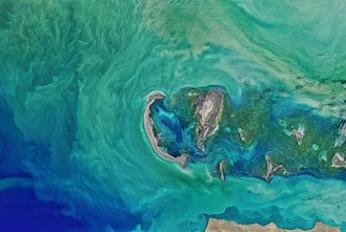 Article - Review of pollution sources and controls in Caspian Sea regionMon, 23/04/2018 - 18:24Daily extractions of crude oil and gas and transportation of them are the main pollution sources of the Caspian Sea. Many trucks for charring oil from ports along the Caspian Sea are considered as point and nonpoint sources along the seaboard. In addition, many ships, which are navigating in the Sea, are emitting pollution t
Article - Review of pollution sources and controls in Caspian Sea regionMon, 23/04/2018 - 18:24Daily extractions of crude oil and gas and transportation of them are the main pollution sources of the Caspian Sea. Many trucks for charring oil from ports along the Caspian Sea are considered as point and nonpoint sources along the seaboard. In addition, many ships, which are navigating in the Sea, are emitting pollution t
- Description
Daily extractions of crude oil and gas and transportation of them are the main pollution sources of the Caspian Sea. Many trucks for charring oil from ports along the Caspian Sea are considered as point and nonpoint sources along the seaboard. In addition, many ships, which are navigating in the Sea, are emitting pollution to the Sea. Many cities and industries surround the Caspian Sea. Pollution from these cities and industries enter the Caspian Sea either directly or through rivers. The purpose of this paper is to look at the benefits of environmental management strategies in pollution prevention such as waste minimization and clean technologies. This minimizes the environmental problems due to waste generation and eliminates the cost of treatment and disposal of the waste. The benefits of the environmental management program along the Caspian Sea will ensure the clean water and the better environment of the Sea.
- Attached documents
- Metadata
- Year
- 2009
 Kazakhstan's Second National Communication to the Conference of the Parties of the United Nations Framework Convention on Climate ChangeSat, 21/04/2018 - 12:00The calculations were made using the MARKAL modeling tool and were based on strategic development plans for different economic sectors. The Communication assesses electricity saving potential in respect of energy efficiency and lower carbon intensity. It also reflects the possible costs related to GHG emissions reduction mea
Kazakhstan's Second National Communication to the Conference of the Parties of the United Nations Framework Convention on Climate ChangeSat, 21/04/2018 - 12:00The calculations were made using the MARKAL modeling tool and were based on strategic development plans for different economic sectors. The Communication assesses electricity saving potential in respect of energy efficiency and lower carbon intensity. It also reflects the possible costs related to GHG emissions reduction mea- Description
The calculations were made using the MARKAL modeling tool and were based on strategic development plans for different economic sectors. The Communication assesses electricity saving potential in respect of energy efficiency and lower carbon intensity. It also reflects the possible costs related to GHG emissions reduction measures in all economic sectors.
For the first time in Kazakhstan we have analysed the influence of climate change on forests and human health, as well as the data on mudflow activity and the change in glaciers. For climate change calculations, we used the data of the hottest decade (1995- 2005) combined with unified WMO methodology and climate change indices. Climate change scenaria were developed using the most recent ocean-atmosphere circulation models.
Nurgali Ashimov
Minister of Environment Protection Republic of Kazakhstan- Attached documents
- Metadata
- Year
- 2009
Document
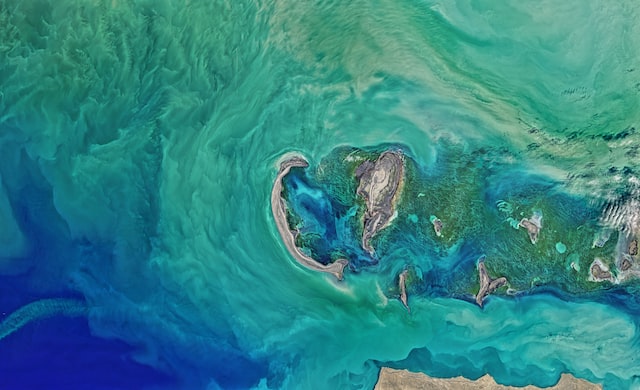
День Каспийского моря 2024 в Астраханской области - Отчёт
Document

Caspian Sea Day 2024 in Russia - Report
Document

День Каспийского моря 2022 - Отчёт о мероприятиях
Document
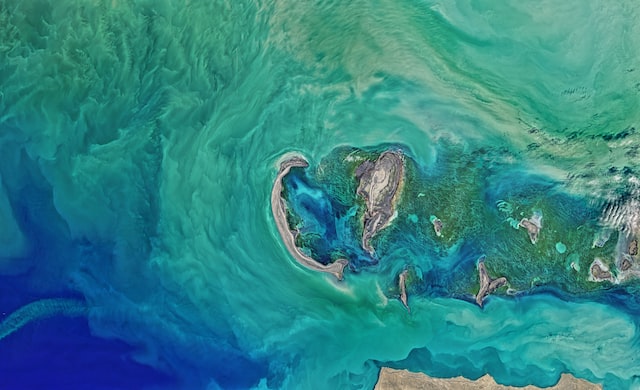
Towards effective implementation of the Framework Convention for the Protection of the Marine Environment of the Caspian Sea by E. Kvitsinskaia
Document

Thesis: “Current developments in the regime and international legal status of the Caspian Sea” by Dr. Barbara Janusz-Pawletta
Document
Геоинформационная система космического экологического мониторинга казахстанской части каспийского моря
Document
Каспий теңізіндегі балықтардың паразитфаунасы
Document
Мониторинг геосферных процессов казахстанской части Каспия
Document
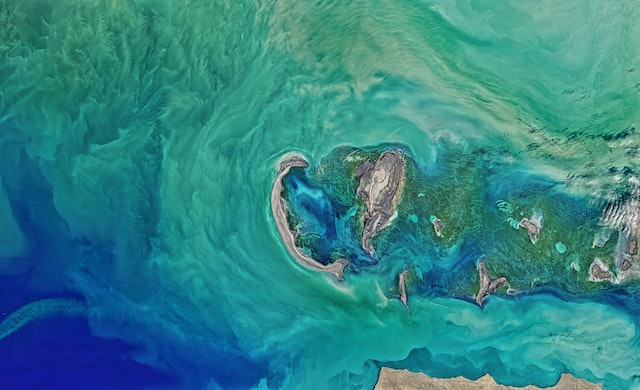
Caspian Environment Programme - Regional Water Quality Monitoring (2009)
Document
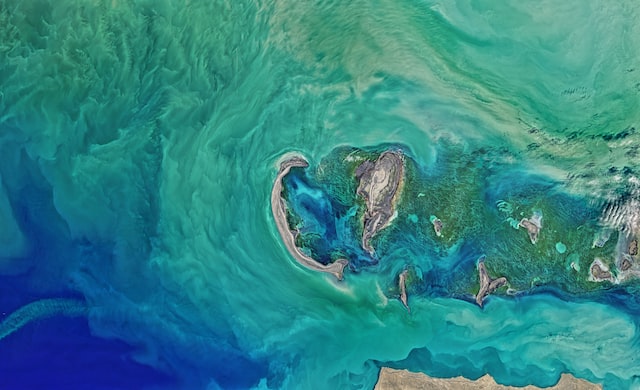
Caspian Environment Programme - Regional Pollution Action Plan (2009)
Document
